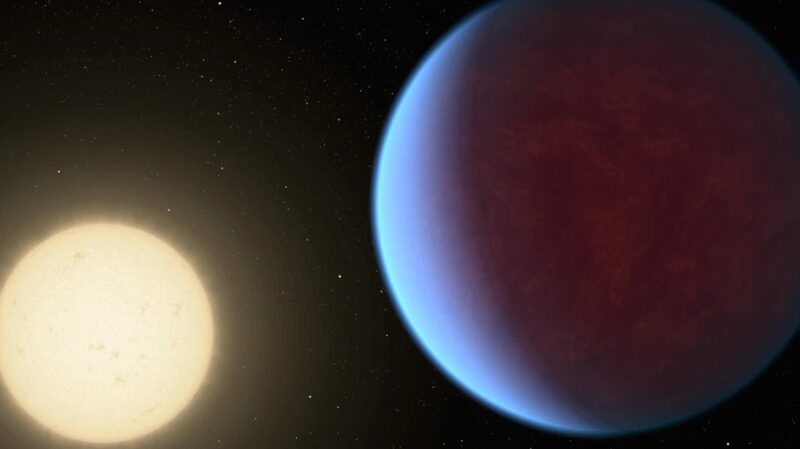After years of searching, astronomers have finally identified a rocky exoplanet with an atmosphere, expanding our understanding of distant worlds. The planet, known as 55 Cancri e or Janssen, is classified as a \"super-Earth\"—a rocky planet significantly larger than Earth but smaller than Neptune.
Located about 41 light-years away in the constellation Cancer, 55 Cancri e orbits a star that is slightly less massive and dimmer than our sun. Astonishingly, it completes an orbit every 18 hours, placing it perilously close to its star. This proximity results in extreme surface temperatures of approximately 3,140 degrees Fahrenheit (1,725 degrees Celsius).
Using infrared observations from the James Webb Space Telescope, scientists detected a substantial atmosphere around the planet. While the atmosphere is inhospitable, possibly rich in carbon dioxide, carbon monoxide, water vapor, and sulfur dioxide, it provides valuable insights into the planet's geology and potential atmospheric dynamics.
Planetary scientist Renyu Hu from NASA's Jet Propulsion Laboratory and Caltech leads the study, published in Nature. Hu explained that the atmosphere might be continuously replenished by gases emitted from a vast magma ocean, despite the planet's harsh conditions making habitability impossible.
Astrophysicist Brice-Olivier Demory of the University of Bern emphasized that 55 Cancri e is one of the hottest-known rocky exoplanets, making it an unlikely candidate for life. However, its discovery marks significant progress as previous atmospheric detections have been limited to gaseous exoplanets.
The planet is likely tidally locked, meaning one side constantly faces its star, similar to how the moon always shows the same face to Earth. This characteristic, combined with its extreme temperatures, underscores the planet's uninhabitable nature.
Despite its inhospitable environment, the discovery of 55 Cancri e with an atmosphere opens new avenues for exoplanet research. Scientists remain hopeful that future studies with the James Webb Space Telescope could explore cooler exoplanets that might support liquid water and potentially harbor life.
Reference(s):
Astronomers finally detect a rocky planet with an atmosphere
cgtn.com




